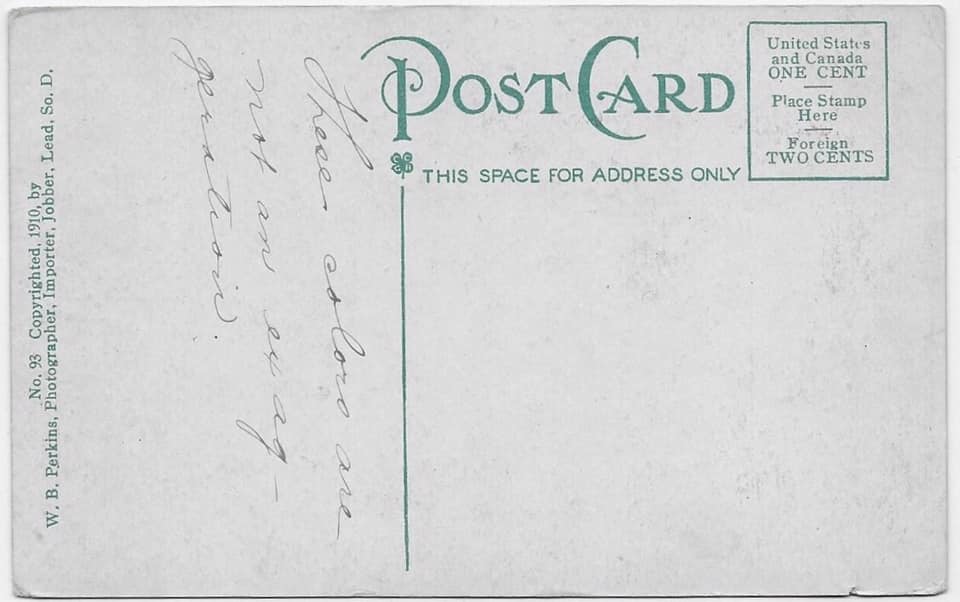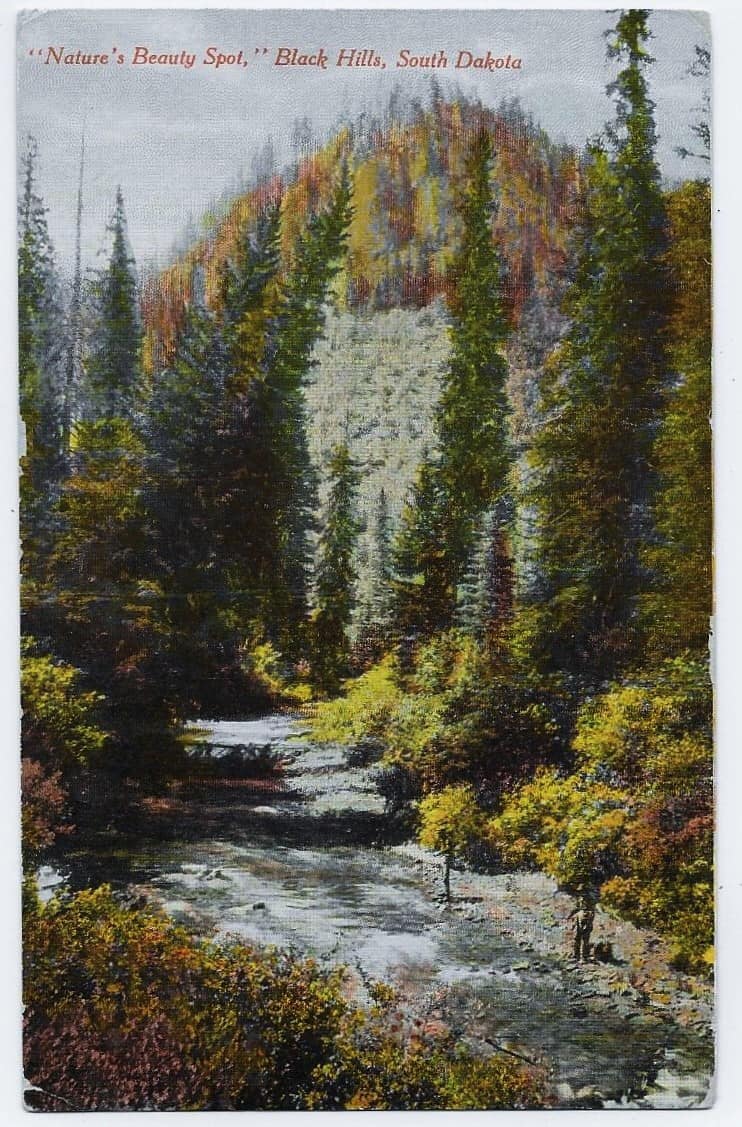Rising incongruously over the Great Plains, the Black Hills are the remains of prehistoric volcanic activity.
Occupied by a succession of indigenous peoples over centuries, the Black Hills were granted to the Lakota peoples (after they had defeated the Cheyenne people in inter-tribal war of 1776) through the Fort Laramie Treaty of 1868.
This Treaty, enacted by the US Government, pledged the Black Hills as a perpetual home to the Lakota people.
The discovery of gold in the Black Hills led to a gold rush in 1874 and the incursion of thousands of European settlers into this restricted area.
The towns of Lead, Deadwood, and Central City were the largest communities established by miners and adventurers.
The violation of the Treaty, only six years old, led to the Great Sioux War and the abrogation of the Treaty by the US.
(The Lakota have never accepted the dissolution of the Treaty and have pursued efforts to reclaim these lands sacred to them.
Apart from the mineral riches which were extracted over the last decades of the 19th century, the area is stunningly beautiful.
Beginning in the early 20th century, naturalists and other visitors initiated a tourist industry which continues today.
This hand-colored postcard photograph was copyrighted in 1910 by W. B. Perkins, “photographer, importer, and jobber”.
Published in Lead, South Dakota, the postcard was not mailed.
An inscription on the reverse seems to have been made by a visitor to the area.
The traveler reports: “These colors are not an exaggeration”.
In the comments, I link a history of this area, including the happy news that indigenous peoples (despite refusing to accept compensation in an account that now totals a billion dollars) have begun to purchase land in the Black Hills with tribal monies and have re-established small reservations in some places.





